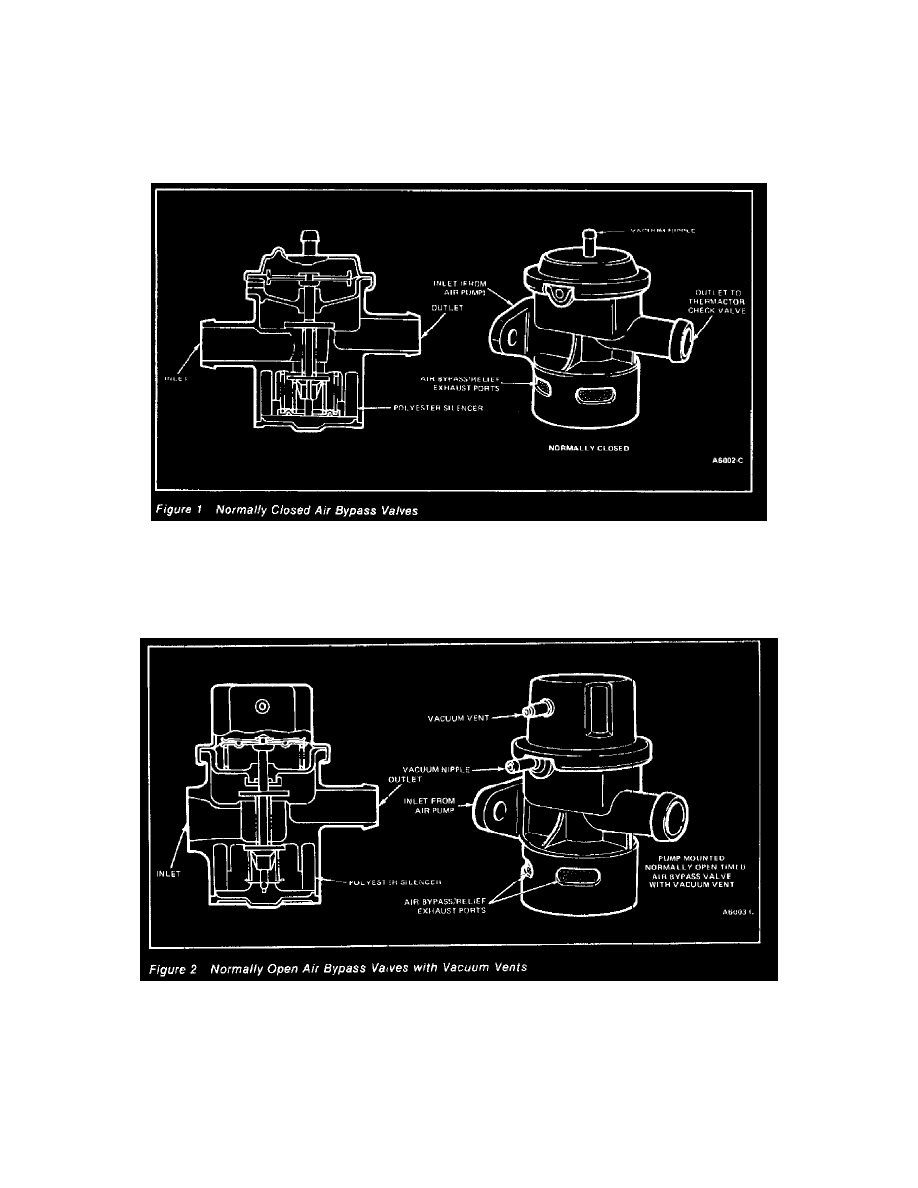Marquis L4-140 2.3L VIN A 1-bbl (1986)

Air Injection Bypass Valve: Description and Operation
Air Bypass Valves
There are two general groups of Air Bypass Valves, normally closed and normally open. Each group is available in remote (in-line) versions or
pump-mounted (mounted directly on the air pump) versions (Figures 1, 2, and 3). The bypass valves are part of the Thermactor System. Normally closed
valves supply air to the exhaust system with medium and high applied vacuum signals during normal (engine at normal operating temperature) modes,
short idles and some accelerations. With low or no vacuum applied the pump air is dumped through the silencer ports of the valve.
Normally open air bypass valves are available with or without vacuum vents. Test procedures differ for each.
Normally open valves with a vacuum vent provide a timed air dump during decelerations and also dump when a vacuum pressure difference is
maintained between the signal port and the vent port. The signal port must have 10 kPa (3 in Hg) more vacuum than the vent port to hold the dump. This
mode is used to protect the catalyst from overheating.
Normally open valves without a vacuum vent provide a timed dump of air for 1.1 or 2.8 seconds when a sudden high vacuum of about 68 kPa (20
in.-Hg.) is applied to the signal port. This prevents backfire during deceleration.
